Cars like the Dodge Charge SRT Hellcat are born from special circumstances. No car company in its right mind would build a car with seven-hundred and seven horsepower and six-hundred and forty lb-ft of torque as part of its product plans. Thankfully, Fiat-Chrysler isn’t like most car companies.
Chrysler is a company populated with people who can take a bad situation and make the best of it. The old adage about taking lemons and making lemonade applies. In the late seventies and early eighties, they were conglomeration of disparate companies, leftovers if you will, joined together for their very survival. And not only did they survive, they thrived, churning out an entire portfolio of affordable cars that were all based on the same platform. They invented the minivan. They daringly re-popularized the convertible at a time when everyone else had given up on the idea. They hired Carrol Shelby to produced performance versions of their cars at a time when most Americans had given up on fun cars. Some of the most adventurous and prescient concept cars ever to debut came from the Chrysler group, including the Dodge Viper, which they actually turned into a production car – something nobody had ever done before. Cab-forward cars were developed and introduced by Chrysler. The list of achievements could go on but in the late Oughts, Chrysler again found itself in trouble. The marriage to Daimler-Benz had soured and with the world economy tanking, people stopped buying cars, not sure if they’d have a job tomorrow. After a shotgun marriage to FIAT, officiated by the US government, Chrysler once again took life’s lemons and made lemonade. Or rather limoncello.
The two companies found a synergy from which to draw from and new product was designed and engineered and old debts were paid off. At some point however, the FIAT-Chrysler Automobile group found it had a lot of investment money tied up in the Chinese market, which wasn’t doing so well. Strapped for cash again, the engineers took what they had and worked with it, like they have so many times before. They developed important things, necessary things like the SRT Hellcat engine: a 6.2L supercharged monster of a Hemi-V8. Which from an investment standpoint may seem like a bad idea, but it brought a lot of excitement and attention to FCA and hey – engineers and enthusiasts alike need morale-boosting products like this. And thanks to FIAT’s parental oversight, they never pushed the Chrysler divisions to be less “American” and more “international.” They actually encouraged it. Which is precisely how we got something as quintessentially American as the Dodge Charger SRT Hellcat. Seven-hundred and seven freaking horsepower and 650 lb-ft of torque thundering under the hood of what is essentially a four-door family sedan. God Bless America!
That’s why I found myself standing in the GT Spirit parking lot before 8:00 AM on a Monday morning, sipping my coffee and watching the employees all file in. They nodded as they passed, talking to each other about their supercharged weekends of automotive thrills. Except Cheryl, our office manager, who stopped to confront me.
“You’re here before eight? What’s up? Why are you standing out here in the parking lot?”
“I’m waiting for a loan delivery,” I replied.
“I don’t think LADA delivers to the States,” she cackled.
“Ha-ha, very funny,” I said. “I’ll have you know FCA is dropping something off for me today.”
“No, the only car FCA is dropping off today is the Charger Hellc—“ she stopped mid-sentence as the realization hit her. Her eyes grew large with what I presumed was fear. “Oh, NO. Oh, no, no, no, no, no, no.”
I smiled. “Oh, YES.”
“How did you— Who— WHY?!”
I just smirked and winked at her. She made a face, turned, and quickly went inside, muttering something about contacting our insurance agent.
A few minutes after 8:00, I heard the most amazing engine sound that I’ve heard in a long time approaching. It was a cross between a big Detroit V8 rumble and a high-pitched whine. It was loud. It was powerful. It sounded like America. This has to be it.
Sure enough, a dark blue Dodge Charger with dark gray racing stripes from front bumper to rear, pulled into the lot followed by a chase vehicle. Subtle it was not. It rumbled into a parking spot near me and stopped. Matte black wheels hid enormous slotted brake rotors and gunmetal gray Brembo calipers. Nice touch. A giant hood scoop and a pair of enormous vents dominated the aircraft carrier deck-sized hood. There were large duct openings for the brakes up front and large vents for the back wheel wells. A tasteful spoiler spanned the rear trunk. This was a darn sharp car, full of testosterone and adreneline and ready to rumble.
The driver got out and looked my way. “This must be for you.”
“It is. How’d you guess?”
“You wouldn’t believe how may people we find waiting for their delivery on Hellcats,” he laughed. “Sign here.”
I took his pen and quickly swished my name on the paperwork. We both stood and stared at the car for a few seconds. 707 hp. Seven hundred (and seven!) horsepower.
Any advice?” I asked.
“Just enjoy it,” he smiled. “Let us know if you have any questions.”
“Great. Soooooo, what, uh…what’s FCA’s policy on tire wear when I return it? Is there a standard? A minimum?”
He paused and smiled. “Well, I’ve seen how the Chrysler guys drive these things around Highland Park. I think as long as you don’t crash it, you’ll be okay.” And with that, he climbed into the chase vehicle and they left.
I continued to walk around the car. According to the paperwork, it was in a color named IndyGo Blue. Nice play on words. IndyGo Blue was reminiscent of another color I’d seen on a lot of Chargers around here: Michigan State Police Blue. Hemi Chargers were one of their favorite pursuit cars and the shade of blue they painted them was awfully darn close to this. Well, maybe if they caught me slightly above the speed limit (Ha!) they’d just think I was a fellow officer. Yeah, probably not, but a guy can hope.
The first thing I did was pop the hood to see the engine. The large Hemi V8 practically filled the engine bay and the enormous supercharger bolted into the “V” between the heads made it look even larger. The SRT Hellcat logo was prominently displayed on the supercharger and the valve covers read “Supercharged HEMI” in large letters that even a blind guy couldn’t miss. Seven-hundred (and seven!) horsepower. WOW.
I closed the hood and then crawled inside the car and planted my butt in the hugely bolstered leather-covered driver’s seat. It was snug but very comfortable. Large SRT Hellcat logos were embossed in the leather. Before me was a pretty standard FCA dashboard with standard FCA instruments nearly identical to the Challenger. You’re never going to confuse the interior with anything from Mercedes-Benz or BMW or Cadillac, but it’s still a comfortable and tasteful interior. It eschews the bejeweled interiors of it’s high-end competitors and embraces the everyday driver ethos. It uses more practical and durable materials – leather and tough plastics. It’s a car designed to take abuse and not break. The backseat actually had some legroom, and two back doors to make entry and exit easy. The backseat also folded down to increase trunk and cargo volume.
The meaty steering wheel was attractive, the leather covering sewn tightly around the inside in white stitching. It had buttons for cruise control, radio control, and hands-free phone operation on it. There were paddle shifters behind the wheel if you wanted more control over the automatic transmission.
The instrument cluster consisted of a bright red tachometer on the left, a speedometer that read to 200mph on the right and a digital display between them. In the center stack was the 8” infotainment screen that I suspected had a full suite of performance measurement programs, digital gauges, and maps; the stereo controls; and the heating and cooling controls. It was nearly identical to the Dodge Challenger dash layout and I’d driven a few of those over the years. so it was pretty familiar. The center console was home to the automatic transmission shifter, a few storage cubbies, and two cupholders. About as American as it gets.
There was also a big red button on the dash that read “Engine Start/Stop.” Push the button and the engine fires with a WHOMP! and settles into a low smooth idle that promises plenty of power. Foot on the brake, select your gear and you feel the massive engine – indeed the whole drivetrain – restrained by your foot on the brake. Let off the brake and the car practically lunges into motion. At idle, this car moves faster than some people jog.
By now, if you don’t have a maniacal grin on your face, there’s something very wrong with you.
Idling down the road, lean your foot into the accelerator and the power comes on with surprising strength and urgency. Give it a good push and the big supercharged 6.2L V8 roars with the sound of a WWII fighter plane at full power. 5 feet away. You find yourself wondering if the name “Hellcat” is derived from the WWII Navy fighter plane. It’s about as loud and powerful and intimidating. You’re thrust back into the thickly padded seats as the wide sticky Pirelli P-Zero’s tear at the asphalt in a blind, frantic attempt at grip. The traction control does a great job of keeping things hooked up and moving forward with minimal slip, doing it’s best to focus all that power on rapid, efficient acceleration.
The problem with acceleration runs though is that you quickly (VERY quickly!) find yourself in triple-digit speeds. That’s where the Brembo 6-piston calipers and slotted rotors come in handy. They quickly haul the heavy car down to legal speeds without any drama.
The other problem with acceleration runs is that you can’t wait to do it again. Foot to the floor, the engine roars, and we watch the scenery go blurry. Again and again and again. It never gets old. Soon the gas tank is empty and we need to fill it up again and the process starts all over. Our car had almost 7,000 miles on it. Given that it’s been through 7,000 hard miles of brutal acceleration runs at the hands of jaded journalists and still felt new and tight is an excellent indicator of it’s durability and engineering.
Knowing that the platform is shared with the Challenger, I figured the infotainment system menu would have Dodge’s SRT Performance Pages app. A quick check revealed it was. The app offers performance data loggers, digital gauges, and driving mode adjustability. I selected it and located the driving mode settings. The delivery guys had delivered it in “Auto” which was a pretty basic mode. Consider it the default setting. I selected Sport mode, changed the suspension settings to Sport, the transmission settings to Sport, and the traction settings to Sport. While I was curious to see what Race mode would do, I figured with seven-hundred (and seven!) horsepower, I should step up cautiously and not get in over my head too quickly. Instantly I felt the suspension firm up from the previous floaty-boat softness the car was delivered with as I slowed down to a red light. Now we’ll see what the Sport traction setting was like.
When the light went green, I mashed the accelerator pedal into the carpet. The engine roared like an enraged monster and the rear tires broke free and spun. Then, as thick white smoke billowed up around them, the tires slowly began grabbing, finally hooked up, and the car shot up the road leaving two long black burnouts and a dense cloud of smoke hanging in the air back at the intersection. I laughed hysterically watching other drivers carefully driving through the dense cloud, unable to see what lay on the other side. That was amazing! We need to do it again!
Next stop sign, check for traffic, stomp the accelerator, feel the tires effortlessly spin, then start to grab, firmly hook up aaaand – GONE! Nothing but a huge white cloud of burnt rubber hanging in the air. DYNO-MITE! This was so much fun that I couldn’t stop myself from doing it again. And again. And again! Somebody stop me! I LOVE this!
Back in the sixties when American muscle cars first came of age, burning off the rear tires was easy as pie. The engines were huge and hugely powerful, and the tires were narrow, hard, bias-ply, and they sucked. You could burn out all day long. But today, tire technology has evolved immensely. Not only the construction which allows us to make them much wider and lower-profile, but performance street rubber compounds today are much stickier than most full-race tires were in the sixties. Despite the great advances in tire technology, the Hellcat still spins ‘em into great clouds of particulate smoke.
But don’t get the wrong idea – the car isn’t a one-trick pony like it’s 1960’s brethren. The suspension, steering, and tires all work together to make it a great handling car too. It has a little more lean and feels a little bit softer than something like, say, the Cadillac ATS-V or the Camaro SS 1LE, but it nevertheless handles very well. It’s very balanced and poised. It’ll take a tight set of S-curves without breaking a sweat. The dips and bumps on lousy back roads don’t fluster it. You can hustle it down great back roads with speed, not having to worry about any handling issues. Combine that chassis performance with that incredible engine and you have yourself a very, very capable machine. One that’s worthy of the racing stripes it wears. It’s an absolute BEAST.
Yet it can be as docile as you want it to be too. Put it in Auto Mode and your mother could drive it to the store and never have any idea of what violence the car is capable of. All while achieving great – well, good – gas mileage. Okay, as long as you keep your foot out of it. Otherwise you’ll find yourself at the gas pumps nearly every day you drive it. The EPA says it’ll get 13 mpg in the city and 22 mpg on the freeway, which seems reasonable and accurate. If your right foot is as heavy as mine though, you’ll be lucky to get 13 mpg.
Recently, a colleague of mine tested an electric car and complained about how sterile and un-engaging it was. “There’s no fuss,” he said. “It’s just so many thousands of algorithms working together to create a flawless, sanitized experience. I want my cars to have fuss.” The Charger SRT Hellcat has plenty of fuss to go around. In fact, it’s all fuss. Good, loud, exciting fuss. And I think we both agreed that I had the better car that week because of it. Because isn’t that why we like cars? The excitement and the experience they provide? The noise of a good engine, the squeal of tires, the immense g-forces generated. If a car isn’t fun, is it worth driving? Is it worth owning? I think not. The SRT Hellcat does not disappoint on that front.
The week I had it, I spent a great deal of time granting rides to family and friends. I heard a lot of “Hey! I heard you’re driving a Hellcat this week! Can I get a ride?” Why, yes. Yes, of course. I’d LOVE to stomp the throttle and burn more rubber. Thank you for the excuse! Everyone loved it. Everyone. Everyone loved the immense and completely unnecessary level of power it generated. Seven-hundred (and seven!) horsepower. Absolutely ridiculous, and yet…absolutely awesome. It made passengers scream words they normally didn’t use in public. My brother told me that he could hear me coming from miles away while waiting for me to show up. Kids in the back seat would scream for more. Everyone got out the car laughing or grinning from ear-to-ear, completely overwhelmed by the sheer audaciousness of it. Okay, there was one passenger who wasn’t sure about it. I had my mother questioning the sanity of FCA’s engineers for building the Charger SRT Hellcat. “Why?! Why would they even build something like this?” she shrieked while clutching for something to hold on to. But dear old mom aside, the enthusiasm was pretty universal.
And when they inevitably asked the price and I told them, not one of them thought it was unreasonable. $66,000 base and $75,000 as tested. I still think it’s perfectly reasonable for what is essentially the automotive equivalent of a Saturn V rocket.
There’s been a lot of hype about the Charger SRT Hellcat and it’s seven-hundred (and seven!) horsepower Hemi engine. A lot of times, the hype is just that: hype. Rarely does the car live up to it, but in the Charger’s case it completely lives up to the hype; even exceeds it. You can’t help but love the Charger SRT Hellcat. And you can’t help but be amazed by it either.

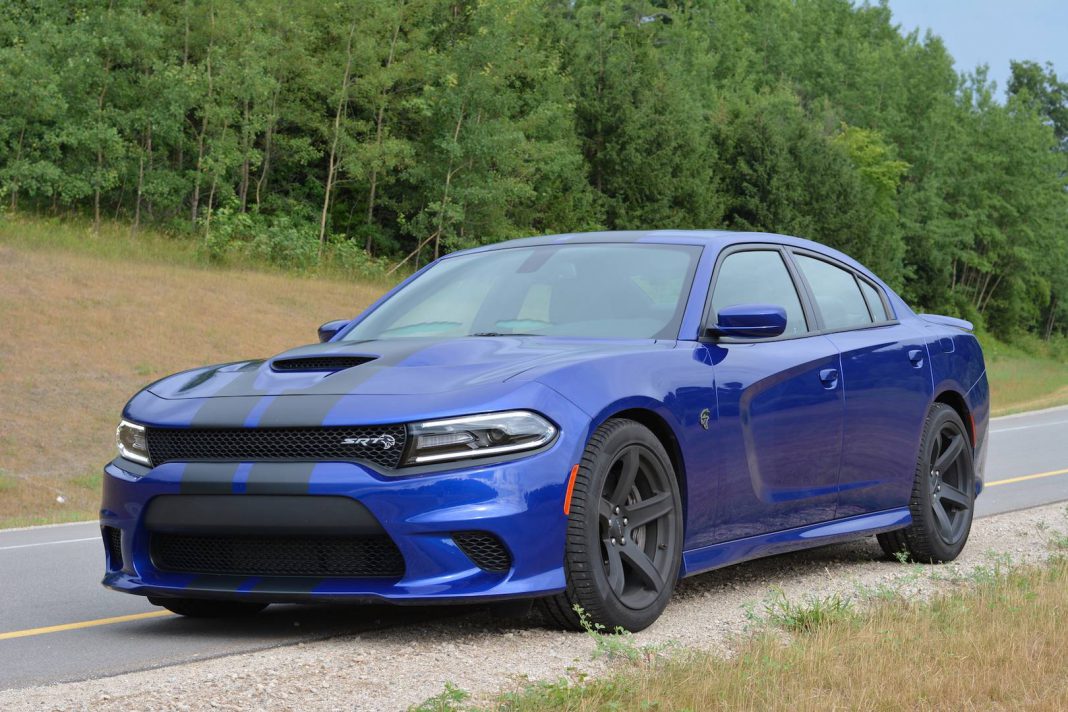


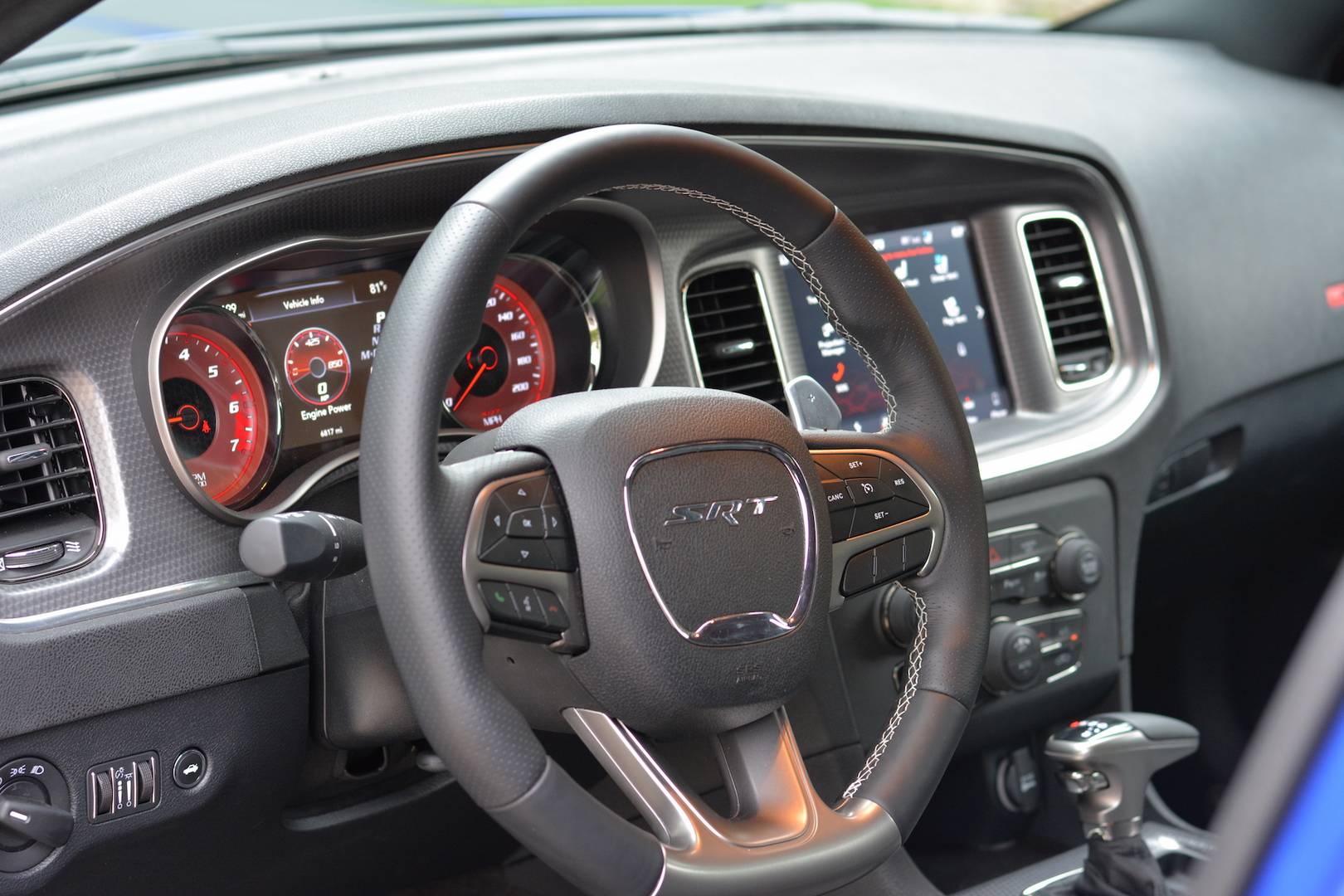

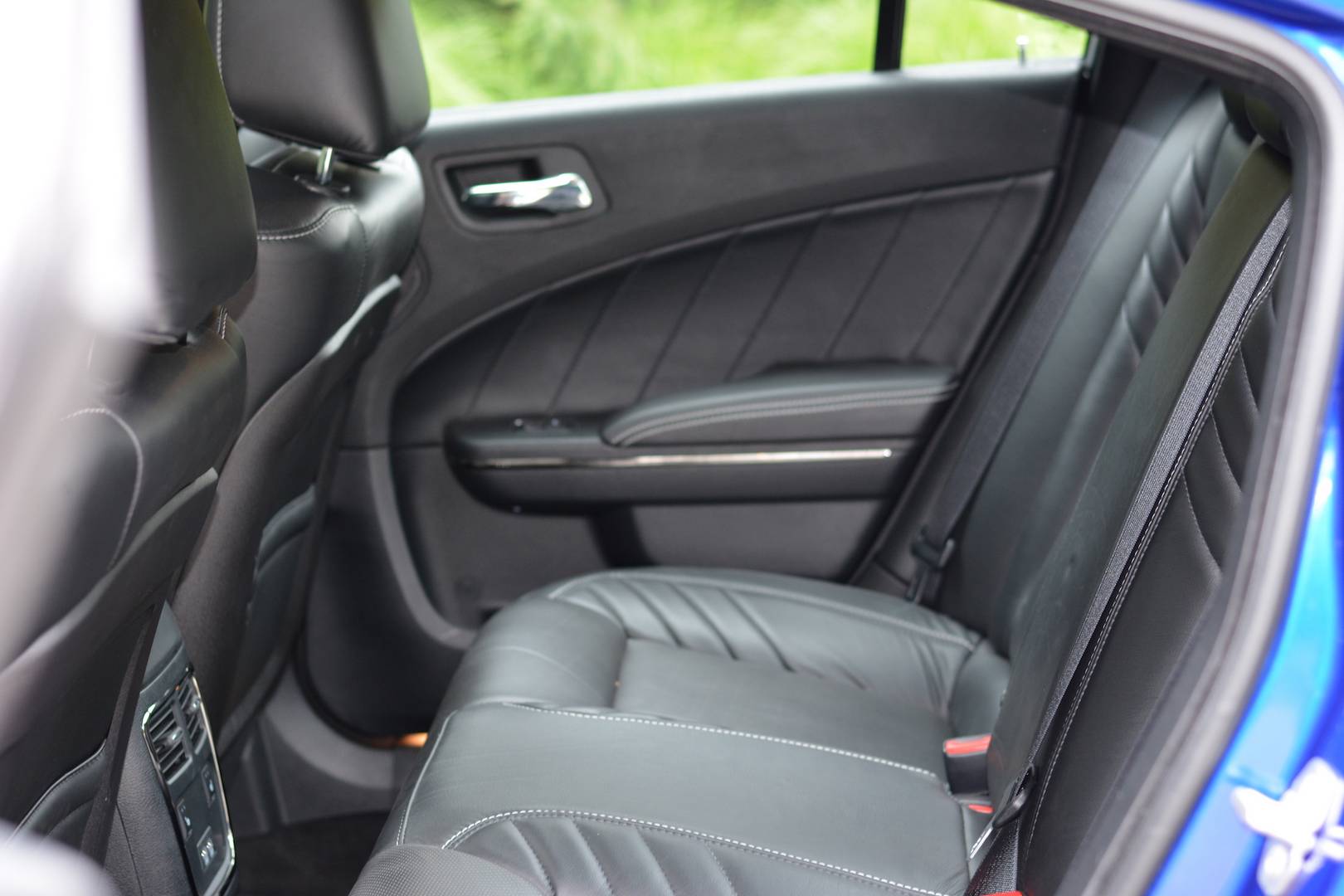
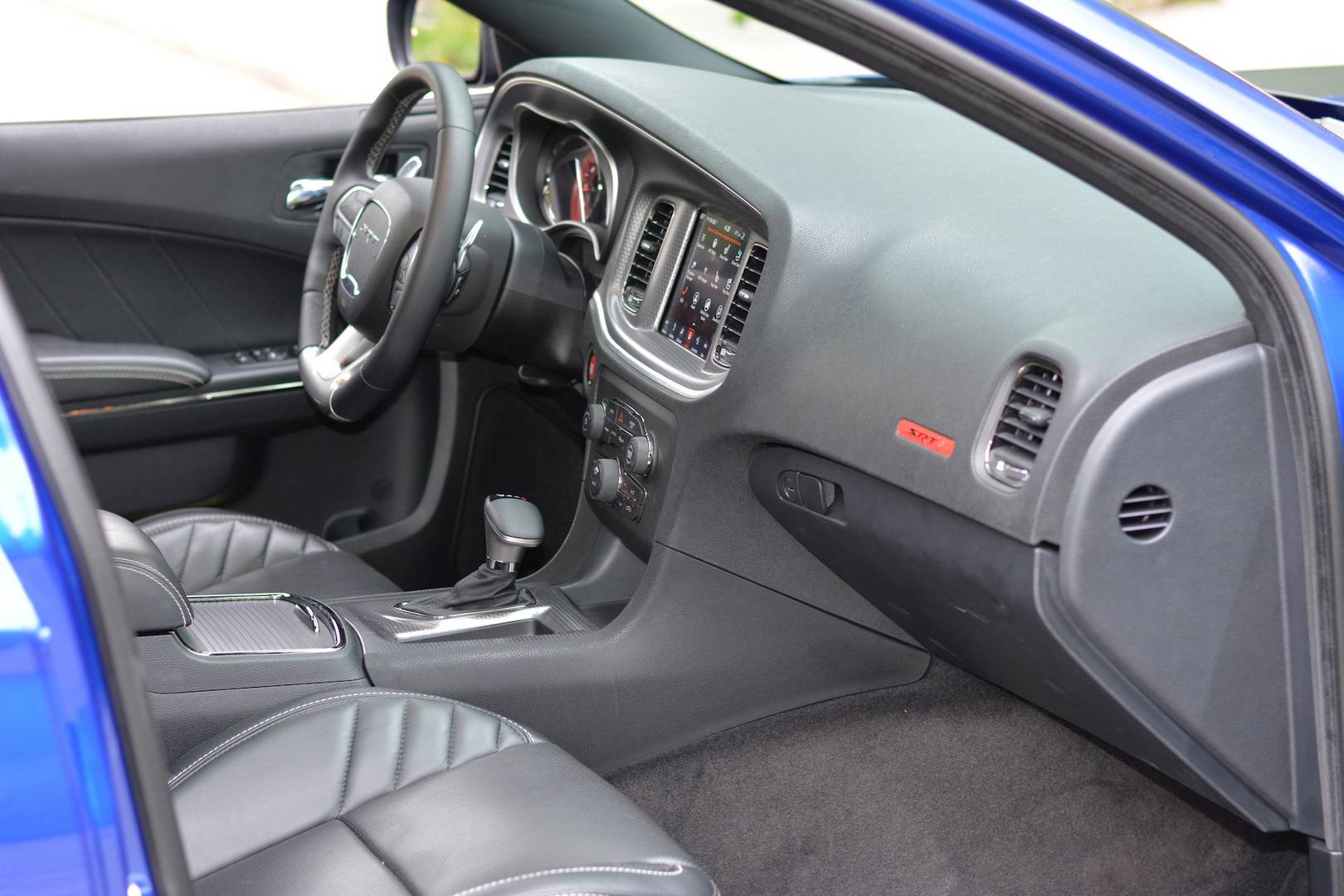
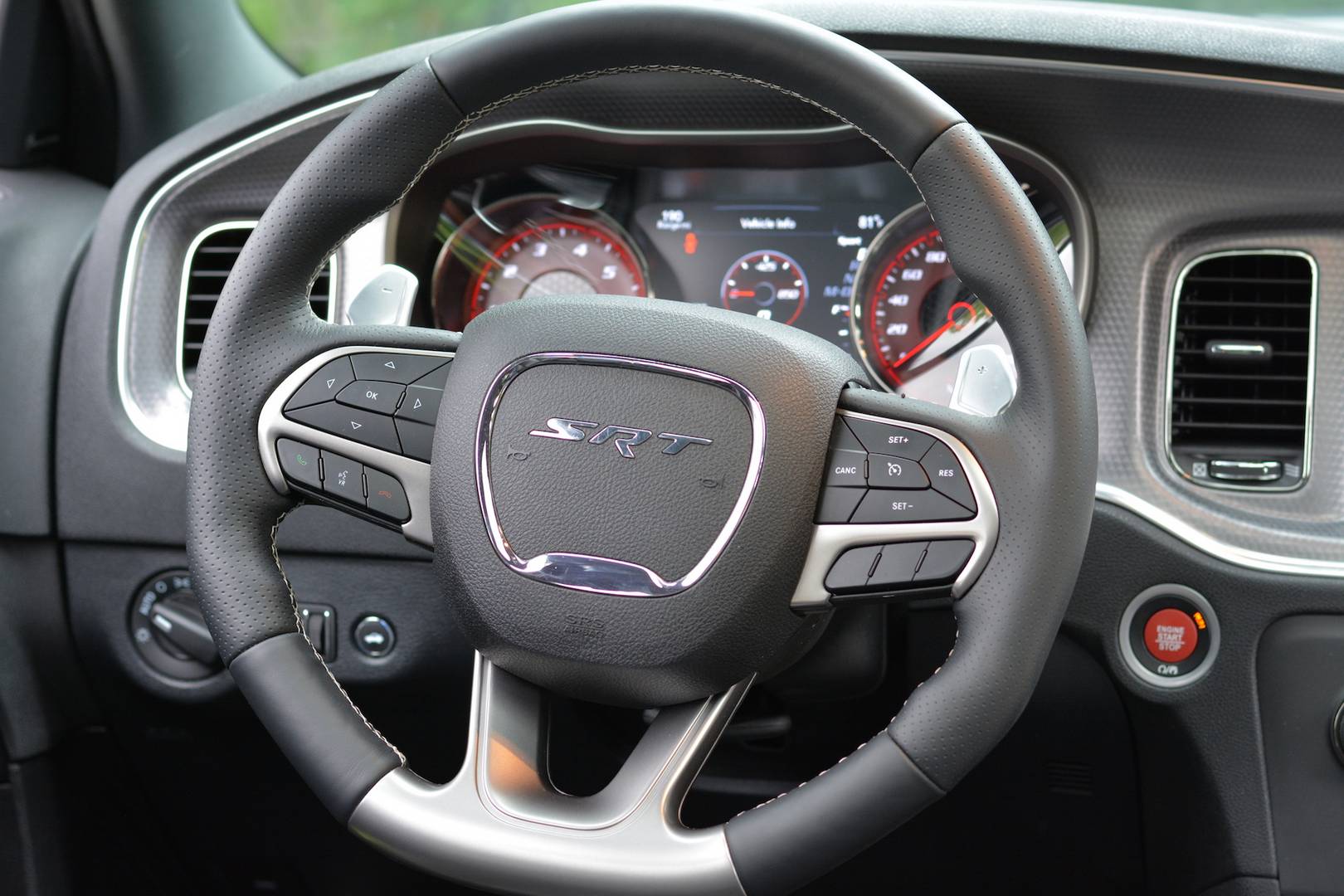

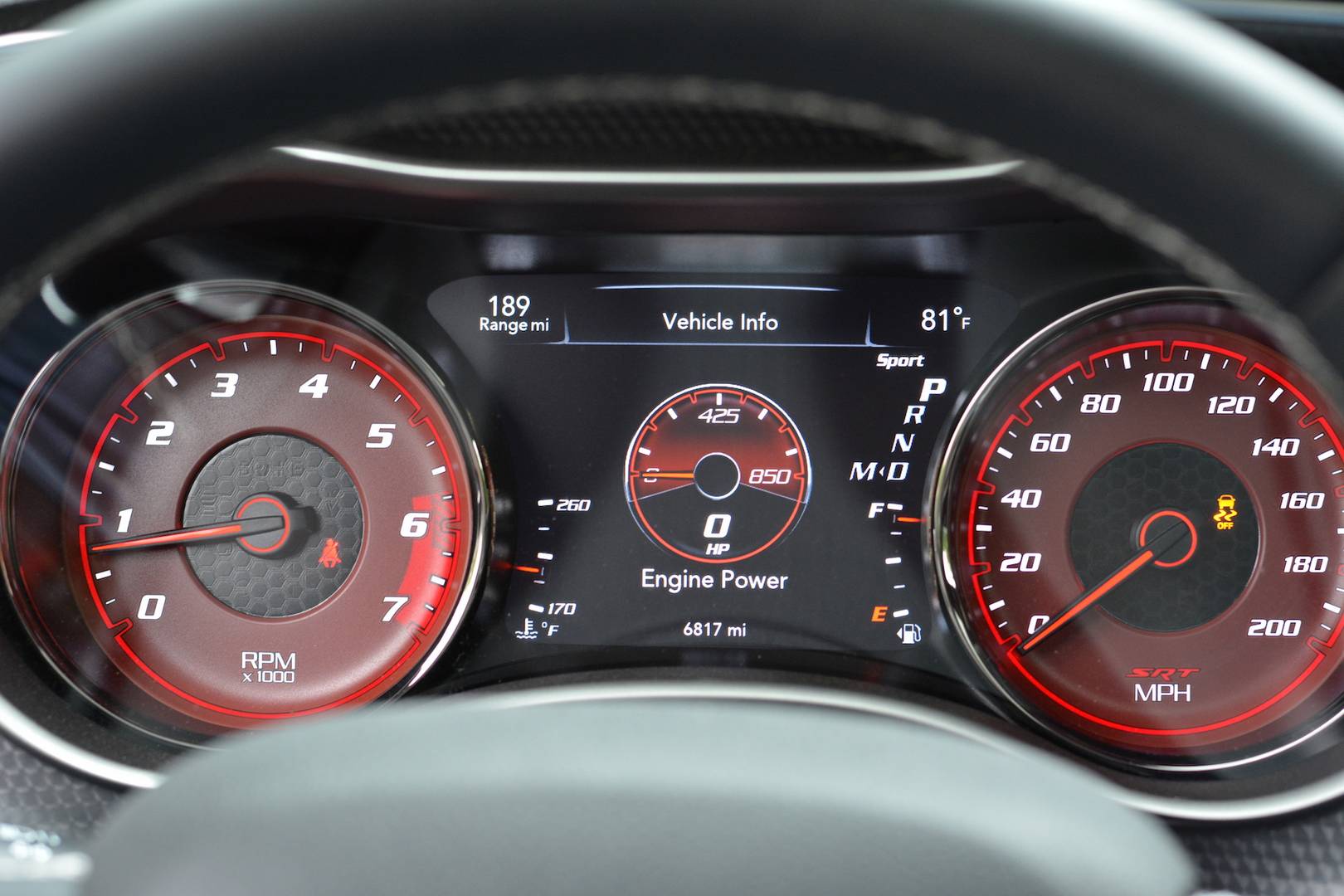
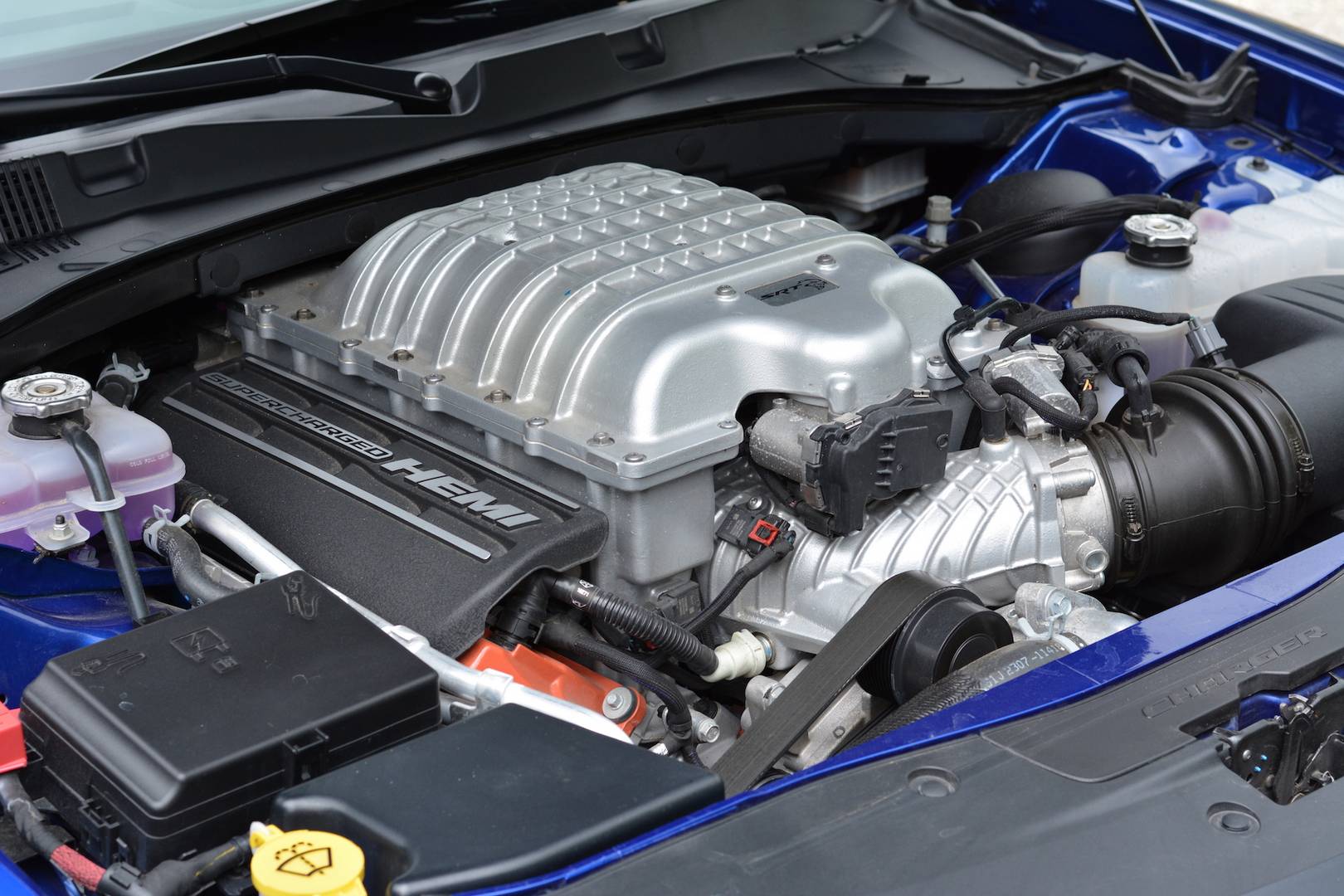
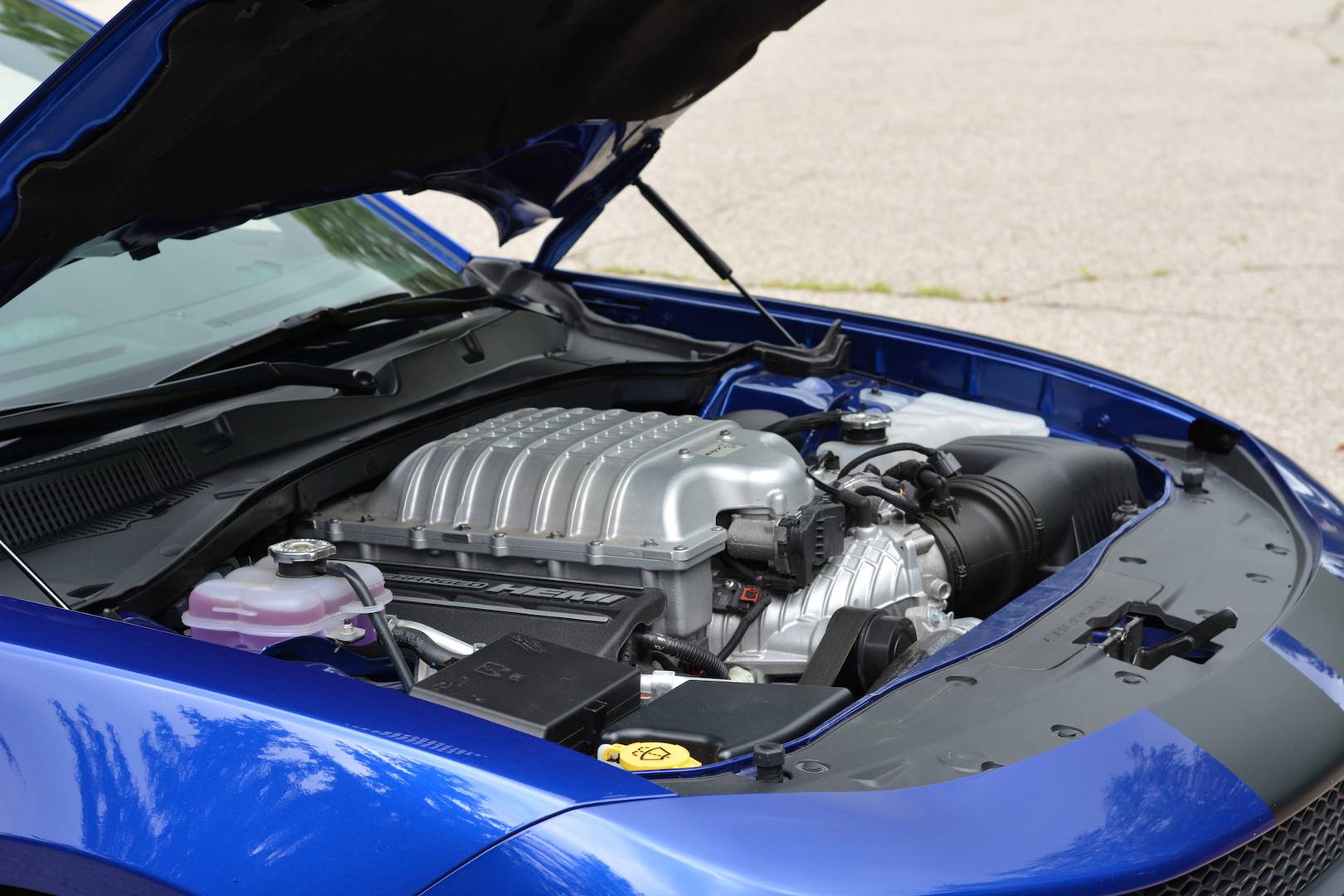

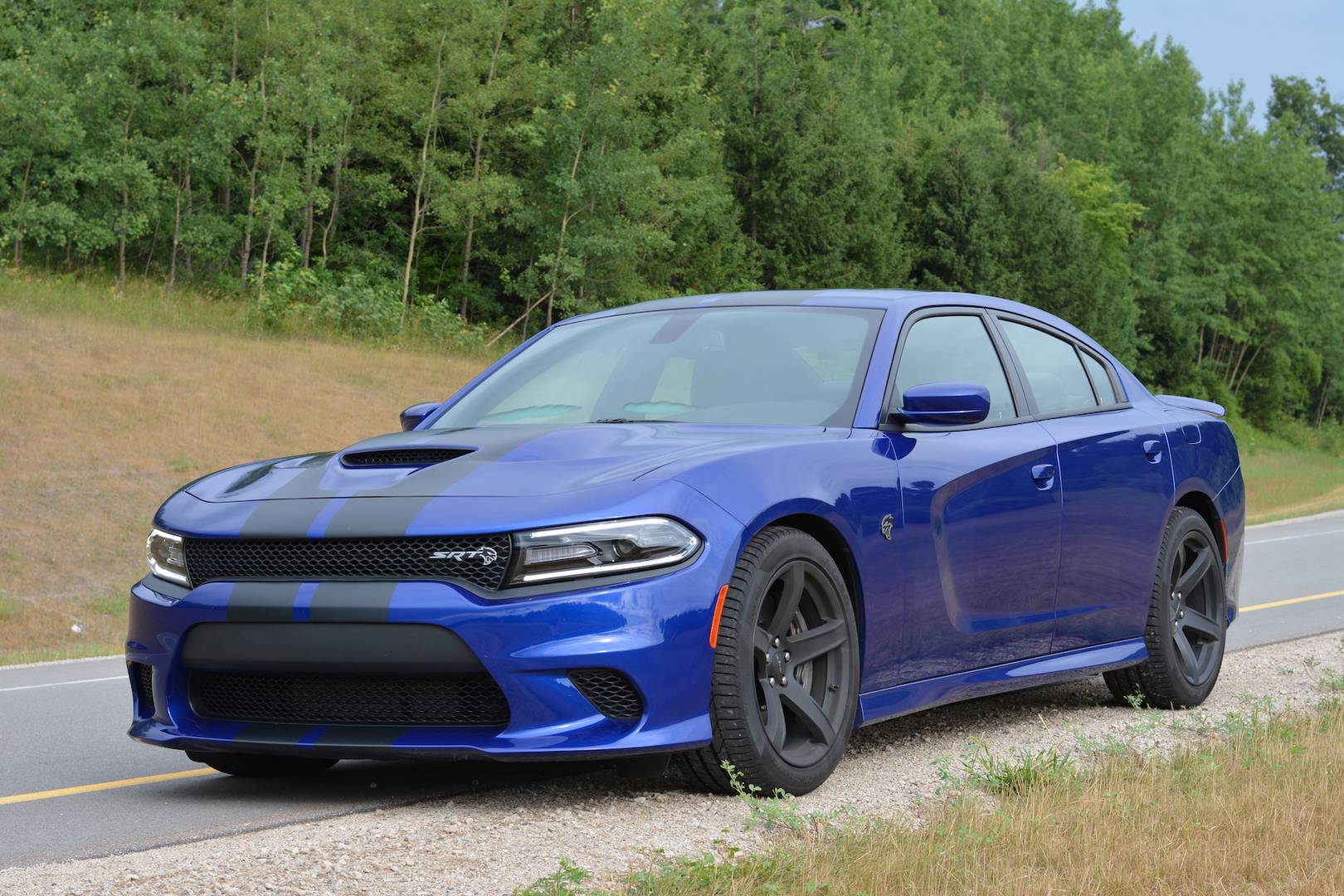
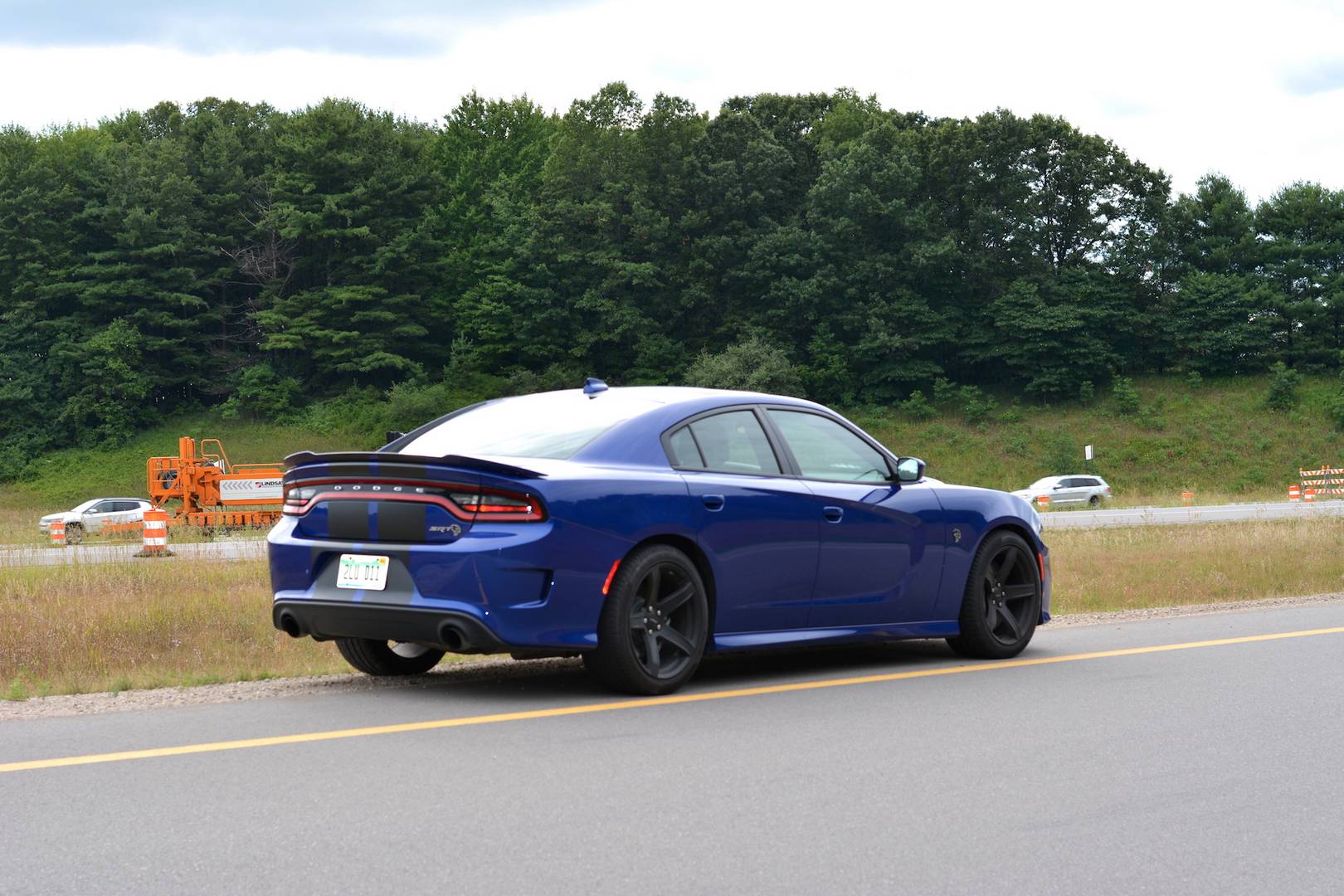
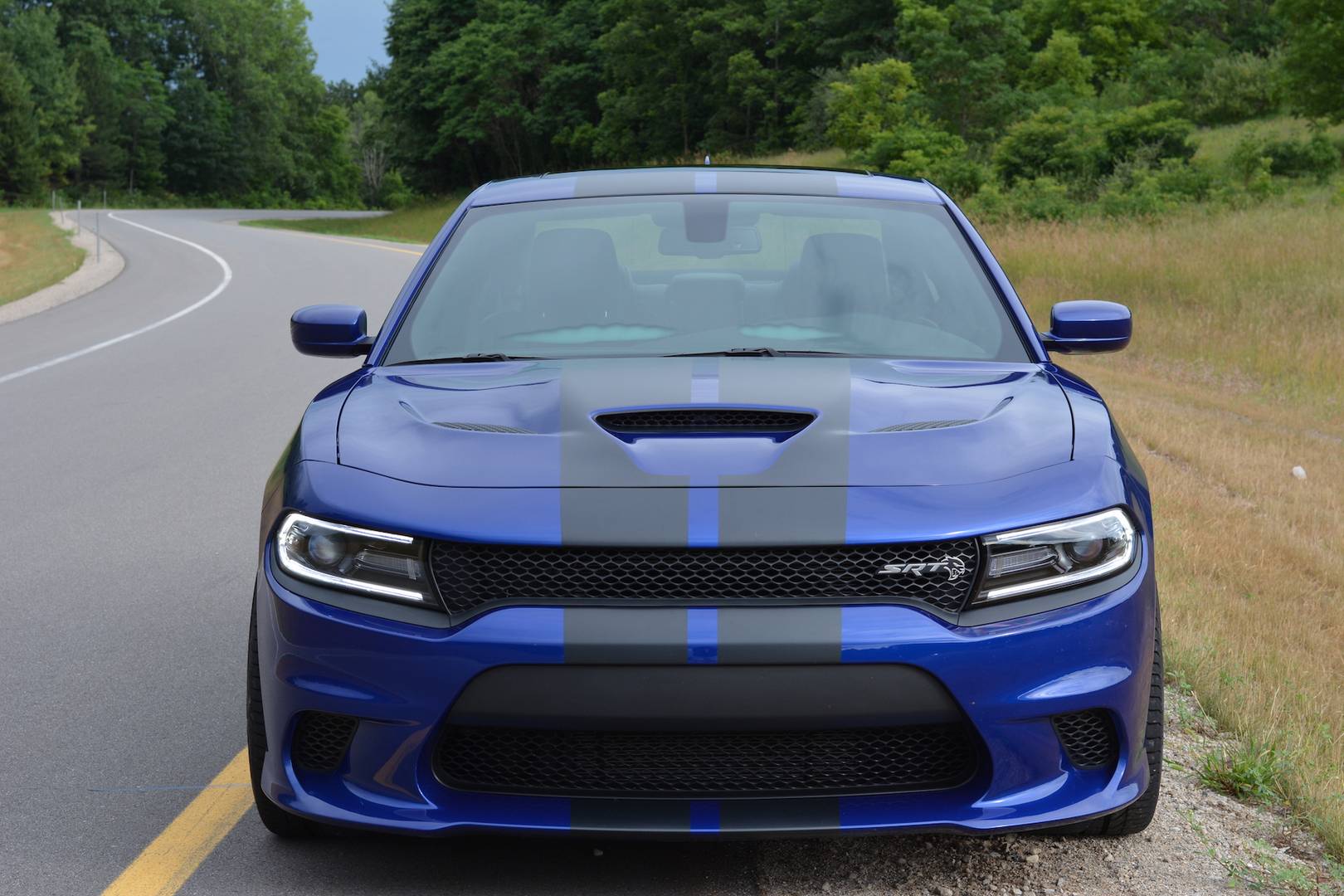



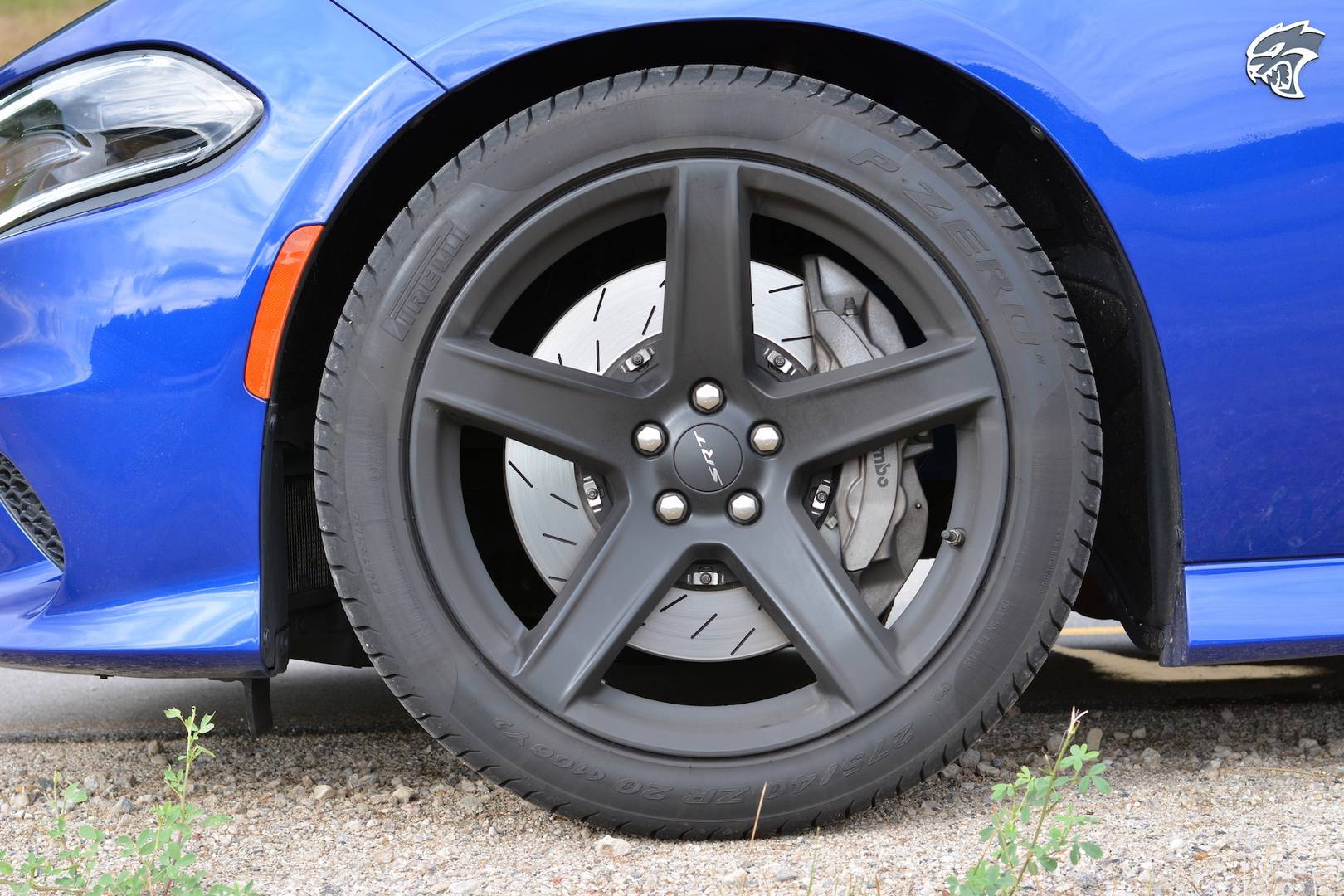
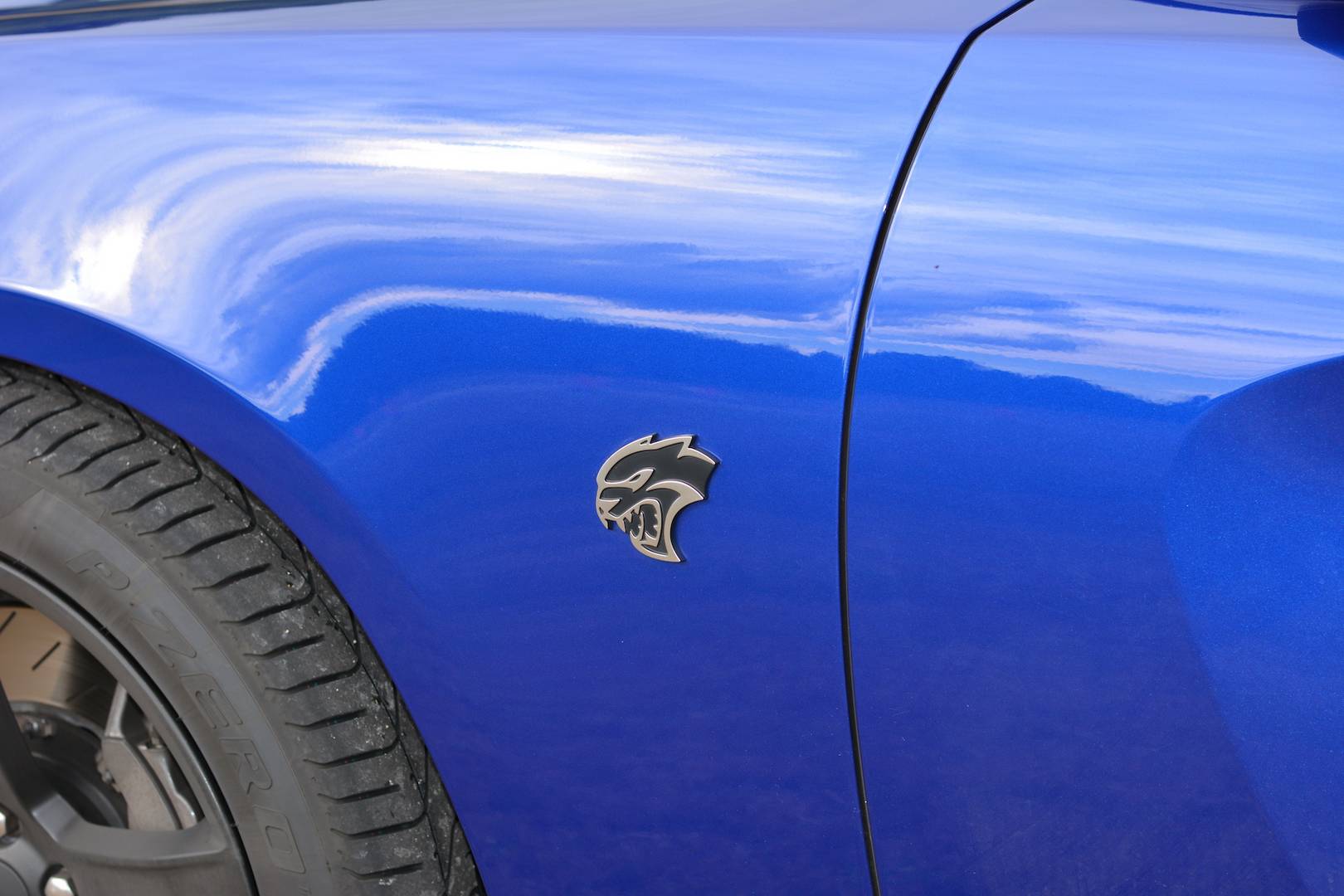


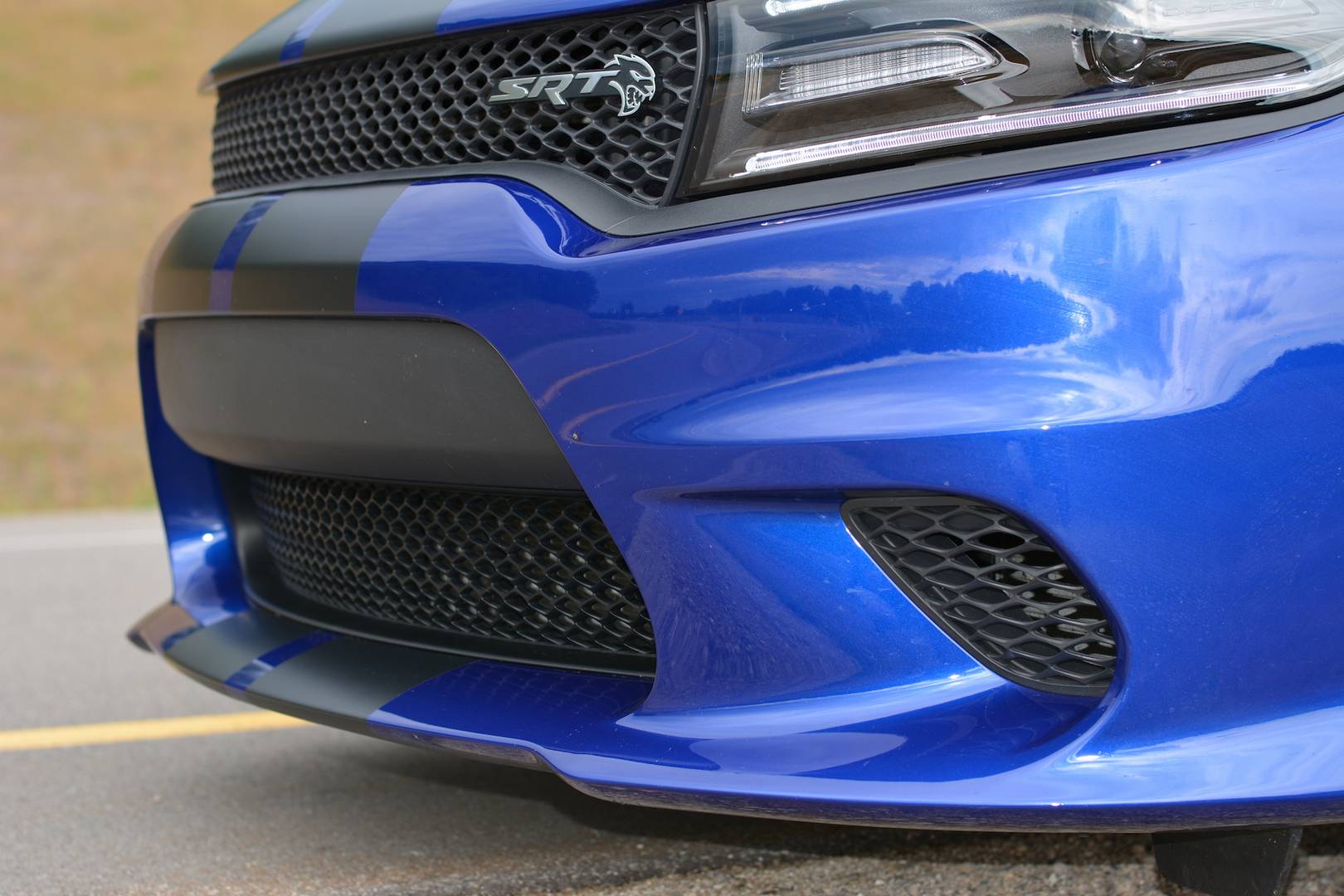



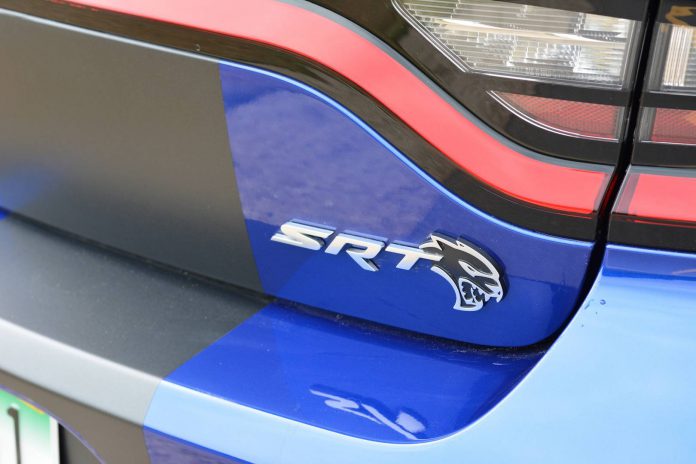
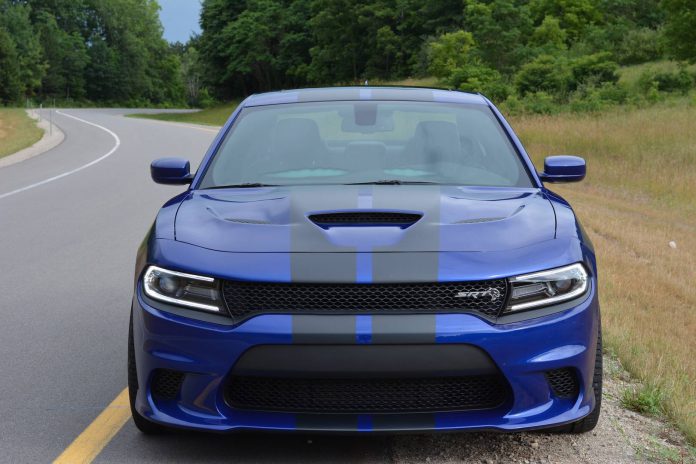
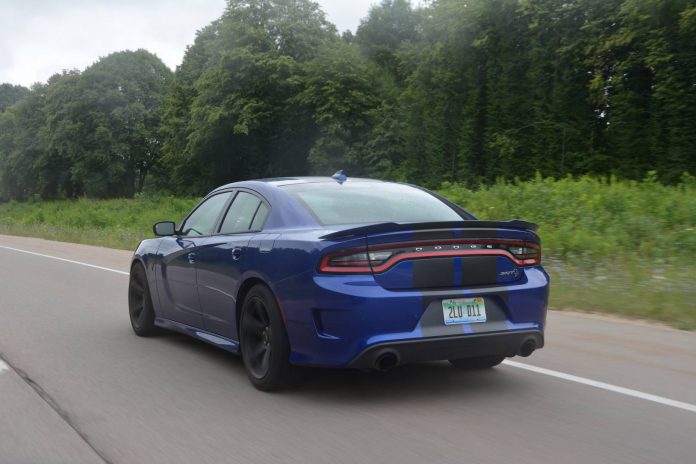
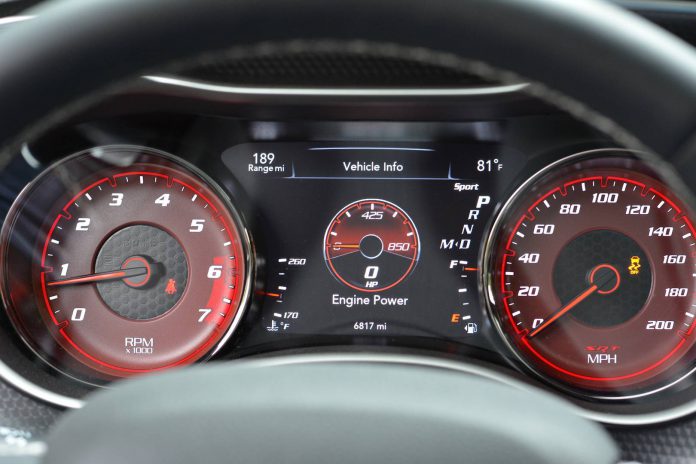














Is this Cat a 2018 because it does not have the new performance grille with dual air inlets that the 2019s come with…
What a beast…..
How much is road tax in uk. Lol.
I had to get one a few months ago. Had fast cars all my life (72 yrs). The most fun, fastest, and beautiful car for the money in the world and with a 5/60 bumper to bumper warranty! This article nailed the Hellcat essence.
The 2019’s have a different leather trimmed dash. Indigo blue is my favorite color.
I have D 2018 Dodge Charger srt392 Daytona F8 green and the new Dodge Challenger hellcat red aye wide body 797hp F8 green to